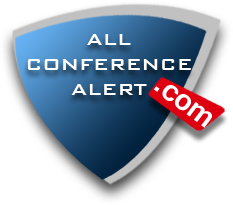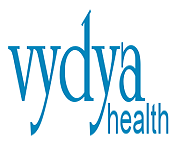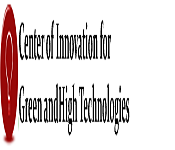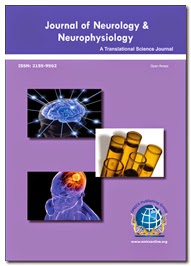Theme:
Neuroinfection-2020
Neuro infection 2021
Neurology Infection 2021 will be operated by world class experts in the field of Neuro Infection and Menatl Health, International symposiums, B2B meetings and workshops will also be organised to discuss the specific topics in the field of Neurology like Clinical Neurophysiology, Neurosurgery, Neuro Muscular Disorders, Dementia, Parkinson’s Disease, Alzheimer's disease, Pediatric Neuropathology and Neuro-oncology and many more. The conference is aimed to identify the genetic determinants of common disorders to understand the mechanisms underlying human cognition. Neurogenetic Disorders are common among developed and developing countries. Genetic disorders and congenital abnormalities occur in around 2-5% of live births accounting for approximately 30% of pediatric hospital admissions in many places in the world. Neurogenetic conditions are generally chronic, long-term and incurable. In Netherlands approximately 10% of patients with neurological conditions have a single mutated gene as the basis for their disease. Furthermore, when polygenic inheritance is considered that is, the interplay between multiple genes and environment, a much larger proportion of neurological diseases are included. Dementia is strongly linked with age, and the Netherlands and other European countries have an increasingly ageing population. Currently 16% of the European population is over 65, with this figure expected to reach 25% by 2030. In the Netherlands it has been estimated that dementia alone costs the economy £17 billion a year.
Student Poster Competition is organized at Conference, to encourage students and recent graduates to present their original research which will be later published in the Conference Series LLC Journals. All accepted abstracts will be presented at the poster sessions during the conference. Conference Series LLC provides an opportunity to present e-Poster for all the students who cannot attend the conference with abstract published in the website with DOI number Live Streaming is a value added service offering to speaker at Conference Series LLC Conference.
Business networking is an avenue for vendors to have network and B2B meetings with “Top scientists and colleagues” and with an effective low cost marketing method for developing sales and opportunities and contacts, based on referrals and introductions either face-to-face at meetings and gatherings, or by other contact methods such as Telephone, E mail, Digital and Increasingly social and business networking websites.
As other neurology events our Mental Health and Neuro infection 2021 also deals with the current research developments in the field of Neurology and it would be hopefully the best platform for everyone joining to acquire something out of their box about the recent trends in Mental Health and Neuro infection research and development.
What’s new and different about our Mental Health Conferences?
With the genuine feedback received from our past series of neuroscience, this year we are trying to organize it in the best way to meet the highest point of conference quality standards.
Keynote lectures | Speaker sessions | Young Researchers Forum | Poster Competition | Video Presentations | Exhibitors Presentations and many more…
An attractive scientific program. All the attendees joining the whole day sessions can share their views/presentations and can express their queries about the given presentation at the end without any hesitation.
Main focus on gathering more number of attendees from various streams of related neuroscience fields to make it interdisciplinary.
Certification for all the attendees
Interact with the world’s leading experts- Networking.
All accepted abstracts for this Congress will be published in the respective Journals. Each abstract will be labelled with a DOI provided by Cross Ref.
Speaker and Abstract pages created in Google under your name which will attract worldwide acknowledgment to your profile and research.
All speaker presentations are going to update in YouTube channel.
Handbook & conference Kit
Last but not least, we are planning to provide CME credits as well for our attendees
About Organization
· 3000+ Global Events
· 25 Million+ Visitors
· 25000+ unique visitors per conference
· 70000+ page views for every individual conference
· Unique Opportunity! Online visibility to the Speakers and Experts
Who should attend?
- Meantal Health
- Neuroscientist
- Neurobiologist
- Neurological Surgeon
- Neurologist
- Neuroanatomist
- Neuropathologist
- Neuropharmacologist
- Neurochemist
- Neurophysiologist
- Neuropsychologist
- Psychobiologist
- Psychiatrist
- Neuroscience Nurse
- Psychophysicist
- Professors
- Students
- Neuro drug Manufacturers
- Alzheimer's disease
- Dementia
- Parkinsons
Benefits of attending:
- Networking Opportunities, Grow Your Professional Network
- Build Your Knowledge Base
- Expand Your Resources
- Meet Experts & Influencers Face to Face
- Learning In a New Space
- Break Out of Your Comfort Zone
- New Tips & Tactics
- Greater Focus
- The Serendipity of the Random Workshop.
Track 1: Mental Health
Mental health outlined by the is “a state of well-being within which the individual realizes his or her own skills, will address the conventional stresses of life, will work profitably and productively, and is in a position to form a contribution to his or her community”. Mental state includes "subjective well-being, perceived self-efficacy, autonomy, competence, intergenerational dependence, and self-actualization of one's intellectual and emotional potential, among others". From the views of positive science or of holistic theory, mental state could embrace a human ability to relish life and to form a balance between life activities and efforts to attain psychological resilience. Cultural variations, subjective assessments, and competitive skilled theories all have an effect on however one defines "mental health".

 Track 2: Neuron
Track 2: Neuron
Neuron is also called nerve cells they are the fundamental units of the brain and nervous system, the cells are responsible to receive sensory input from the external world, and sending motor commands to our muscles, and for transforming and relaying the electrical signals at every step in between action potential. Other than that, their interactions define we are as people. Having said over roughly hundred billion neurons do interact closely with other cells.
Track 2: Neurology
Neurology is the branch of medicine which concerned with treatment of scatters of the sensory system, which incorporates the cerebrum and spinal rope. It deals with the examination and medication disorders and conditions of victims. They involves the central and peripheral nervous system, including their coverings, blood vessels and all effector tissues. Include their coverings, blood vessels, and all effector tissue such as muscle. Neurological system relies in the field of Neuroscience, which is the study of nervous system. And the person who specialized in Neurology is known as Neurologist. The neurologist is trained to diagnose, investigate and treat a neurological disordered person that affects brain, spinal cord and nerves. If any patient requires surgery Neurologist refer to Neuro-surgens.
Track 3: Neurosyphilis
Neurosyphilis refers to infection of the central nervous system in the patient with syphilis and also can occur at any stage. The majority of neurosyphilis cases have been seen in HIV-infected patients. Meningitis is the most common neurological according to early syphilis. Tertiary syphilis symptoms are completely neurosyphilis, it may occur at any stage of contamination. To diagnose the infection, patients undergo a lumbar puncture to acquire cerebrospinal fluid for analysis. The cerebrospinal fluid is tested for antibodies for specific Treponema palladium antigens. The most preferred test is the VDRL test, which is sometimes amplfy by fluorescent treponemal antibody absorption test should be done to patient.
Track 4: Neurophysiology
Neurophysiology is the study of central and peripheral nervous system. It involves the study of both pathophysiology along with clinical methods used to diagnosis both in peripheral and central nervous system. Tests which are conducted are concerned with measuring the electrical functions of the brain, nerves in the limbs, muscles and spinal cord. The examinations in clinical neurophysiology field are not limited to tests conducted in a laboratory.
Track 5: Encephalitis
Encephalitis is the inflammation of the brain. There were several causes but the most common is viral infection or the immune system mistakenly attacking brain tissue. It is an acute inflammation of the brain usually resulting a viral infection. It causes herpes simplex viruses, which means cold sores and genital herpes and also it causes Varicella zoster virus, which means chickenpox and shingles.
Other neurological infections include:
- Fungal infections.
- Parasitic infections.
- Prion diseases.
- Bacterial infections such as Lyme disease, tuberculosis, syphilis.
- Brain abscess.
Track 6: Neuroimmunology
Neuroimmunology is a field combining neuroscience which means study of both nervous system and immunology which means study of the immune system. Neuroimmunology contributes to development new pharmacological treatments for different neurological conditions. Many types of interactions involve both the nervous system and immune systems including the physiological functions. The two systems in health and disease, malfunction of either and or both systems that leads to disorders, like the physical, chemical, and environmental stressors that affect nervous system and immune systems on a daily basis. The person who studies about the Neuroimmunology is known as Neuroimmunologists.
While Neuroimmunologists originally focus on classical Neuro inflammatory disorders, such as multiple infections, there is strong evidence to suggest that the immune response which contributes to genetic white matter disorders, neurodegenerative diseases, neuropsychiatric disorders, peripheral nervous system and Neuro-oncological conditions.
Track 7: Neurosurgery
Neurosurgery or neurological surgery is the medicinal specially concerned with the prevention, examination, surgical treatment and improvement which affect any portion of the nervous system including the brain, spinal cord, peripheral nervous and extra cranial-cerebrovascular system. A doctor who specialises in neurology is known as neurosurgeon. They are medically trained as neurosurgical specialists who can also help the patients who suffering from back and neck pain along with the illnesses like head injury and Parkinson’s disease.
Track 8: Neuro-onocology
Neuro-onocology is the study of brain and spinal cord neoplasms, which are very dangerous and life-threatening. Among the million brain cancers, gliomas of the brainstem and pons, glioblastoma multiforme, and high-grade astrocytoma are among the worst. . Mind tumours can happen at any age In these cases, untreated survival is usually only a few months, and survival with current radiation and chemotherapy treatments may extend that time from around a year to a year and a half, possibly two or more, depending on the victim’s condition, immune function, treatments used, and the specific type of malignant brain neoplasm. In the event that a destructive tumour which begins somewhere else in the body sends cells which wind up developing in the cerebrum, such tumours are then called optional or metastatic mind tumours. This talk is centred around essential cerebrum tumours. Surgery in some cases will be cured but, as a general rule, malignant brain cancers tend to regenerate and emerge from remission easily, especially highly infectious cases.
Track 9: Neurogenomics
Neurogenomics is the study of an organism influences the development and function of its nervous system. Neurogenomics investigates connections among genotypes, phenotypes, and the earth, utilizing a scope of genomic and bioinformatics ways to deal with integrate datasets catching various levels of sensory system function This field intends to unite functional genomics and neurobiology in order to understand the nervous system in the from a genomic perspective.
In nervous system vertebrates is made up of two major cells – neuroglial cells and neurons. There are hundreds of different types of neurons exist in humans, with varying functions – some of them process external stimuli other cells generate a response to stimuli where others organize in centralized structures of the brain, spinal ganglia that are responsible for cognition, perception, and regulation of motor functions. Neurons in these centralized locations tend to organize in heavy networks and to communicate extensively with each other. Prior to the availability of expression arrays and DNA sequencing methodologies, researchers sought to understand the cellular behaviour of neurons including synapse formation and neuronal development and regionalization in the human nervous system in terms of the underlying molecular biology and biochemistry, without any understanding the influence of a neuron's genome on its development and behaviour. As our understanding of the genome has expanded, the role of networks of heavy interactions in the maintenance of neuronal function and behaviour has garnered interest in the neuroscience research community. Neuro genomics allows researchers to study the nervous system of an organism in the context of these underlying regulatory and transcriptional networks.
Track 10: Neurochemistry
Neurochemistry deals with identities, structures and functions of compounds that are generate and harmonize the nervous system. Neurochemicals also include oxytocin, serotonin, dopamine and other neurotransmitters and neurotransmitter-regulating substances. It principally weights on the powerful measures to control the dreariness and mortality with wealth of Schizophrenia, phenylketonuria, meningitis and other psychiatric issues. While neurochemistry as a recognized science is relatively new, the idea behind neurochemistry has been around 18th century. Originally, the brain had been thought to be a separate entity from the peripheral nervous system. Beginning in 1856, there was a string of research that disproved that idea. The chemical makeup of the brain is nearly identical to the makeup of the peripheral nervous system. The study of neurochemistry came from Johann Ludwig, Wilhelm Thudichum. He is one of the pioneers in the field of "brain chemistry". He is first to hypothesize that many neurological illnesses could be contributed to an imbalance of chemicals in the brain. He was also one of the first scientists to believe that through chemicals majority of neurological diseases could be treated.
Track 11: Clinical neurology
Clinical neurophysiologic testing provides valuable support in predicting outcome in the setting of disorders of consciousness, including coma and traumatic brain injury. Electro encephalography and evoked potentials are simple to apply, inexpensive, safe, and available in most rehabilitation facilities. This reviews use of Electro encephalography and evoked potentials in post anoxic coma and traumatic brain injury. Bilateral absence of cortical somatosensory evoked potentials may be regarded as a predictor of poor out come in hypoxic brain damage. Flash VEP may be useful to differentiate between good and poor outcome.
In addition to this low encephalography frequencies, burst suppression, and isoelectric encephalography patterns prognosticate poor outcomes in hypoxic brain damage. While a loss of cortical somatosensory evoked potentials is generally regarded as a negative sign in the acute phase of hypoxic brain damage, absence of cortical somatosensory evoked potentials responses is not necessarily associated with poor outcome in traumatic brain injury. Event-related potentials can provide support in outcome prediction. In particular, the N100, mismatch negativity, P300, and N400 may improve accuracy of outcome prediction disorders of consciousness of different etiologist. Some evidence suggests that event-related potentials may be superior to somatosensory evoked potentials in predicting functional and disorders of consciousness outcomes. Event-related potentials are measured brain responses resulting from specific cognitive tasks, sensory stimulation, or planned motor activity.
Track 12: Paediatric neurology
Paediatric neurology can be observed mainly in teenagers, babies and kids. Paediatric neurology in kids is of three essential sorts in whom two are ischemic neurology in which blockage of veins outcome in absence of blood stream and harm. When a vein is blocked, blood vessel ischemic neurology is utilized. At the point when a vein is blocked, it is cerebral Sino venous thrombosis. In the third shape, haemorrhagic neurology, the vein crack is to be blocked. The most known signs and side effects of paediatric neurology incorporate the sudden appearance of failing or death of face, arm or leg, more often on one side of the body. The discipline of infant neurology includes spinal cord, brain and autonomic nervous system, peripheral nervous system, muscle and blood vessel illnesses.
Track 13: Neuromuscular disorders
Neuromuscular disorders affect the nerves that control voluntary muscles. Voluntary muscles can control by our self like in arms and legs. Neuromuscular disorders mostly effects on arms and legs Nerve cells are called as neurons that send messages and control these muscles. When the neurons become delicate or die, then communication between nervous system and muscles will break down. As a result, muscles weaken and can lead to twitching, cramps, aches, pains, and joint and movement problems. Frequently it also affects heart function and ability to breathe slows down.
Track 14: Neurogenetic and neurometabolic abnormalities
Neurogenetic and neurometabolic abnormalities are disorders that affect the brain functions. They occur in young children of all ages and genders. Neurogenetic disease describes the brain abnormalities that occur the changes in genes of the child and these cause certain brain cells to develop and function abnormally. In the case of neurometabolic abnormalities disorders result from problems in the enzymes of the body’s cells which are either unable to use food to produce the energy that cell needs or get rid of the breakdown products of the foods used.
Track 15: Neuropharmacology
Neuropharmacology is the examination of how drugs influence cellular function in the nervous system and the neural system through which they influence behaviour of a person. The two limbs of neuropharmacology are behavioural and molecular. Behavioural mainly deals with study of how drugs effect on human behaviour including the study of drug dependence and addiction effect of the human brain. Molecular neuropharmacology involves the study of neurons and their neurochemical communication with the overall goal of developing drugs have favourable effects on neurological functions.
Track 16: Neuroscience
Neuroscience is also called as neural science. It is one of the most specialized fields of medicine in the world. This field of drug focuses on the health of nervous system including the brain and spinal cord. Neurolinguistics helps us to look at the similar constraints between the language and the brain. Neuroscience nursing is a profession that advice patients suffering from neurological problems like injuries such as head and spinal trauma from accidents and disorder such as Parkinson’s disease, meningitis, encephalitis, epilepsy, and multiple sclerosis. Neuroscience nurses also effort with patients suffering from strokes and birth defects that have affected the nervous system.
Track 17: Neuropathology
Neuropathology is the study of pathology focused on the disease of brain, spinal cord and neural tissue. This consists of both central nervous system and the peripheral nervous system. Neuropathologist’s works in the department of anatomic pathology for diagnosis. Tissue analysis appears from either surgical biopsies or post mortem autopsies and this tissue samples include muscle fibers and nervous tissue. Brain disease or brain injury can be related to brain death.
The hyperbolic government funding in Neuroinfection and Neuro immunology analysis associate in nursing an ever-growing demand for analysis targeted on drug discovery for development of novel therapies in medicine disorders square measure driving the expansion of Neuro infection and Neuro immunology market.
The global marketplace for psychotic sickness is anticipated to grow at a slow rate throughout the forecast amount. The slow rate is imputed primarily to the loss of patent exclusively of branded medicine and therefore the emergence of generic medicine. Now the generic medicines are available at lowest prices which everyone can afford the medicine other than branded one.
Manufacturers of branded medicine square measure probably to expertise a decline in sales revenue thanks to the penetration of low-priced generic medicine within the market, which is likely to impact the growth of the market for antipsychotic medicines.
Study Coverage
The importance of this report is board and covers therapeutics used in the treatment of neurological disorders.
This report discusses the present and future market potential of neuron infections and immunology medicines and also provides a close analysis of regulations, neurological disorders, competitive setting, epidemiology and pipeline drugs etc.,
Market Overview
The key factors propelling the growth of the market are the increasing prevalence of neurological disorders, huge investments by private players in neurology devices, increase in R&D in the field of Neuro therapies, and rising through population.
The growth of the global neurology devices market is attributed to the increasing incidence of neurological disorders that include brain aneurysms, brain tumours, memory disorders, multiple sclerosis, Parkinson’s disease, post-herpetic neuralgia, spinal cord tumour, peripheral neuropathy, epilepsy, and stroke.
The increasing healthcare spending, increasing foreign direct investment by global medical device manufactures, and increasing neurological disease prevalence are expected to drive the overall market growth. Neuro infections also involve fungal, parasitic, bacterial infections, brain abscess and prion diseases.
Brain Health devices are utilized as a part of the treatment of neurological disorders, for example, Alzheimer infection and different dementia, epilepsy, cerebrovascular diseases, including stroke, headache, and another migraine issue, Parkinson's sickness, multiple sclerosis, Neuroinfection, mind tumors, horrible disarranges of the sensory system because of head injury and neurological issue because of ailing health. Neurological scatters may likewise happen because of different contaminations, for example, viral disease like Zika virus, bacterial disease, and parasitic contamination. As per the World Health Organization, in 2016, around 450 a great many individuals were influenced by neurological scatters over the world. Around 50 million individuals were accounted for to experience the ill effects of epilepsy over the globe and more than 6 million individuals kick the bucket because of a stroke every year. Brain health devices, for example, CT filter, MRI, EEG, MEG, Transcranial Doppler gadgets are generally used to screen mind movement.
Rising commonness of Alzheimer's Ailment is relied upon to support market development
The central point adding to the development of the brain health devices market is the rising number of Alzheimer's cases. For example, According to the Alzheimer's Association, in 2017, more than 5 million individuals are assessed to experience the ill effects of Alzheimer's malady, which is likewise answered to be the 6th driving reason for death in the U.S. Besides, developing geriatric populace, rising number of horrendous mind damage cases, and uncontrolled headways in innovation, for example, brain biomarkers, quality treatment, undifferentiated cell treatment and keen cerebrum prosthetics are adding to development of the cerebrum wellbeing gadgets showcase. The theory that amyloid is the root cause of Alzheimer’s is losing steam. In some cases may be caused by an early-life infection. Young children are also getting infected with this virus. Moreover, finding and treatment neurodegenerative disorders through the micro biome and neuroimaging methods additionally enlarge showcase development. Notwithstanding, high expenses of these gadgets are in charge of impending business sector development.
The report includes:
- Analyses of the global market trends, with data from 2019, estimates for 2020, and projections of compound annual growth rates through 2024
- Historical background on neurological disorders and therapeutics, growing prevalence of neurological disorders, increasing research and development activities regarding neurology research, and analysis of the factors influencing the market
- Quantitative analysis of the neurology therapeutics market covering Parkinson Diseases, Alzheimer Diseases, Psychotic Disorders, Epileptic Disorders, Autism Disorders, and Brain Tumor Diseases
Reasons for Doing this Study
Neuroimmunology market comprises of various therapeutics used for the treatment of different neurological disorders. The bio-pharmaceutical companies are investing in the development of innovative therapeutics for the treatment of Neuro disorders. Government organizations square measure funding analysis and development activities associated with neurology analysis. These factors are impacting the neurology market positively coupled with the growing prevalence of neurological disorders.
New approaches for the treatment of neurology related indications were pursued by pharmaceutical companies. The new medicines with a completely unique mechanism of action or improved in delivery, system can offer a new choice to presently prescribed neurology medicines.
The global neurology market is growing to increase within the population, growing awareness relating to mental and neurologic sickness, increasing insurance reforms and constant analysis and development in neurology by pharmaceutical companies.
Conference Highlights
- Neuroimmunology
- Encephalitis
- Neurophysiology
- Neurosyphilis
- Neurology
- Neuron
- Neurosurgery
- Neuro-onocology
- Neurogenomics
- Neurochemistry
- Clinical neurology
- Paediatric neurology
- Neuromuscular disorders
- Neurogenetic and neurometabolic abnormalities
- Neuropharmacology
- Neuroscience
- Neuropathology
- Psychiarty
- Dementia
To share your views and research, please click here to register for the Conference.
To Collaborate Scientific Professionals around the World
| Conference Date | December 11-11, 2020 | ||
| Sponsors & Exhibitors |
|
||
| Speaker Opportunity Closed | |||
| Poster Opportunity Closed | Click Here to View | ||
Useful Links
Special Issues
All accepted abstracts will be published in respective Our International Journals.
- Journal of neurological disorders.
- Journal of Neurology and Neuroscience
- Journal of Neurology and Neurophysiology
Abstracts will be provided with Digital Object Identifier by










